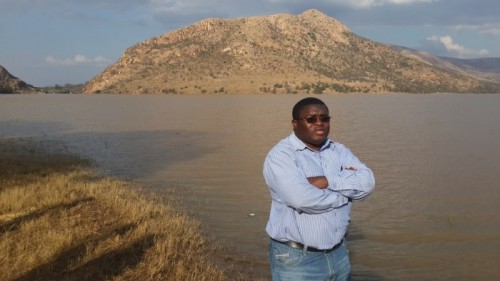
Water Scheme
I recently participated in a rapid assessment exercise that was designed to provide information on the water security challenges of the Northern Cape Province in South Africa. This information was required by some water users in the province to motivate for private sector investments in water security projects. The rapid assessment was conducted by a team of researchers, of which I was part, from the Water Research Node at Monash South Africa. In this article, I try to highlight some of the key findings from the assessment.
The rapid assessment revealed that water is generally viewed as a major constraint to the province’s aspirations for social progress and economic growth. It is widely acknowledged that the challenges of water security are most severe in the Northern Cape compared to the other provinces in South Africa. These challenges are multidimensional in nature and occur at relatively larger spatial and temporal scales. This is partly because the province is regarded as a highly water-stressed, semi-arid region that experiences cyclical droughts and is subject to highly variable runoff.
At the frontline of the struggle to secure the province’s stressed water resources is a water management authority known as Sedibeng Water. This water management authority was established in 1979 largely to service areas in the then Goldfields/Western Transvaal. Currently, Sedibeng Water does not only operate in the Northern Cape Province, but also across two other provinces: Free State and North West. As it stands, Sedibeng Water is responsible for servicing an area of about 86,000km2 across the three provinces.
In general, the main functions of Sedibeng Water include the supply of water (both bulk and retail) and sanitation services. Its key assets include eight plants, 56 pump stations and 326 reservoirs, which collectively are valued at around R1.3 billion. Its annual turnover has been pegged at around R428 million. Sedibeng Water operates a pipeline network that extends over 692km in the Free State region, 678km in the Northern Cape region and 650km in the North West region.
On an annual basis, Sedibeng Water supplies approximately 78 million kilolitres of water to municipalities, farms, mines and other industries. In the Northern Cape Region, it mainly provides bulk water to the mines and municipalities. Sedibeng Water services its areas in the Northern Cape through the Vaal Gamagara Water Scheme which has been in existence for about 35 years. The main purpose of the scheme is to facilitate the distribution of purified bulk water for mining, industrial and domestic use. It comprises a raw water pump station, purification works, six booster pump stations, several reservoir facilities and a pipeline network of about 1,700km.
The assessment revealed that Sedibeng Water faces serious challenges which might affect its ability to secure an assured supply of water for its clients in the long term. Of notable significance, the Vaal Gamagara Water Scheme is in urgent need of an upgrade to increase the volume of water supply from the current 17 million kilolitres to 40 million kilolitres. The increase has been necessitated by the ever-growing demand for water in the Northern Cape as a result of the ever-expanding mines and households as well as the ageing pipes of the schemes which need to be replaced. While this scheme provides a secure water supply line, its water offtake system has been estimated to only have about 5 years remaining on its lifespan. The cost of upgrading the scheme has been estimated at R7.5 billion.
The people interviewed during the field visit clearly indicated that Sedibeng Water does not have the capacity to raise this amount of money on its own. The current levels of revenue derived from its clientele base cannot fully finance the costs of the upgrade. In order to meet the full costs, the current revenue system would have to significantly increase water tariffs to about R23-30 per kilolitre, amounts which many small towns in the Northern Cape would not be able to pay.
The assessment showed that ultimately the biggest challenge facing Sedibeng Water is the management of ever-growing and competing demands for water expressed by various constituencies in the Northern Cape Province. As the province becomes more heterogeneous and diverse, the demands for water have broadened and intensified, thereby increasing the significance of institutional effectiveness. This realisation signifies constant pressure on Sedibeng Water to adopt socially acceptable water demand management institutions. Eventually, the continuously evolving character of the demands for water in the Northern Cape will take a toll on the institutional effectiveness of Sedibeng Water in responding to the growing demands.
For me, this assessment is important as it exposes the complexity and centrality of institutions in securing water. The assessment demonstrates that institutions are established in a complex socio-hydrological context, which includes institutional forces. This understanding implies that the opportunities for successful investments in water security projects are largely contingent on systemic insights into the underlying institutional structures and processes. By exposing these insights, research on and investments in water security are poised to take new directions.
